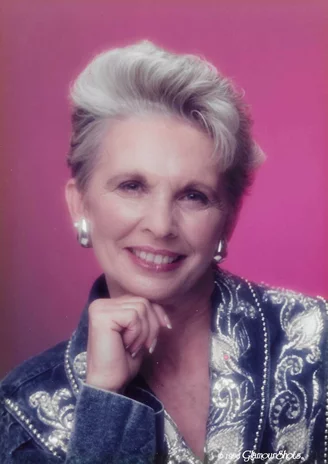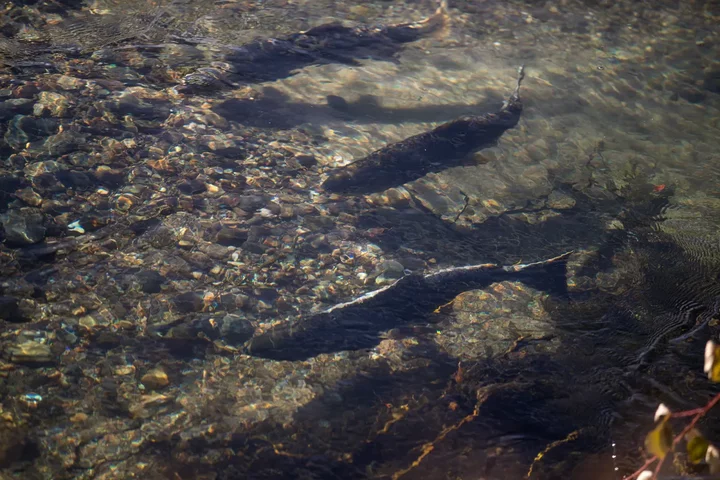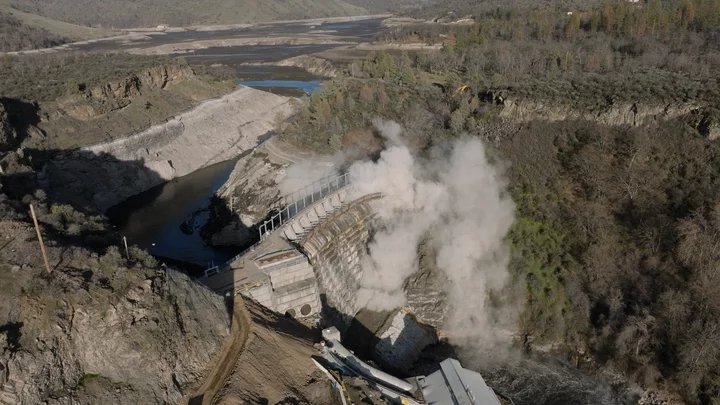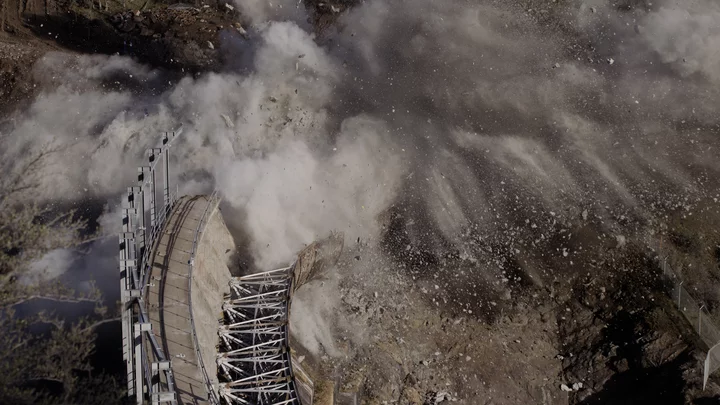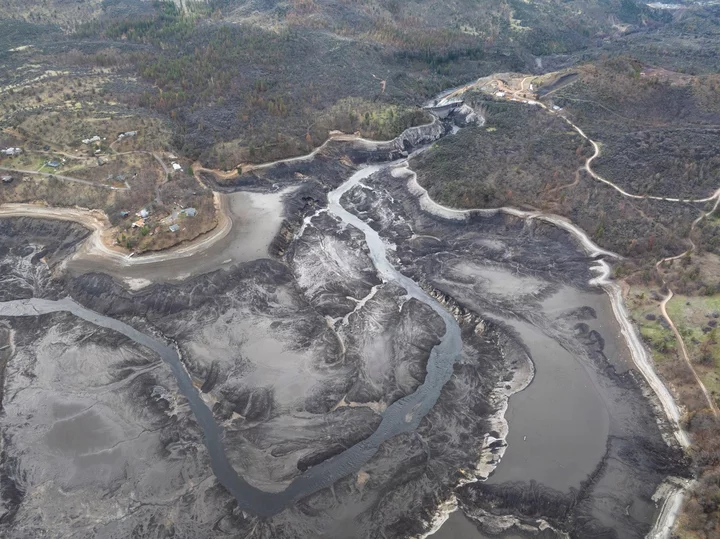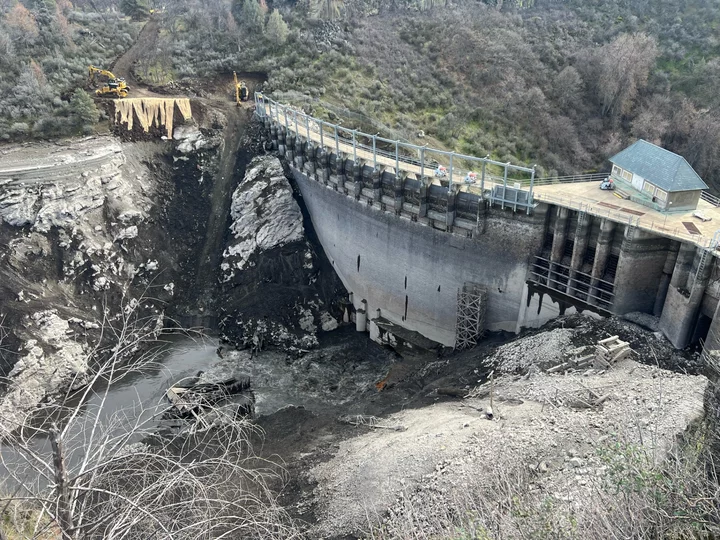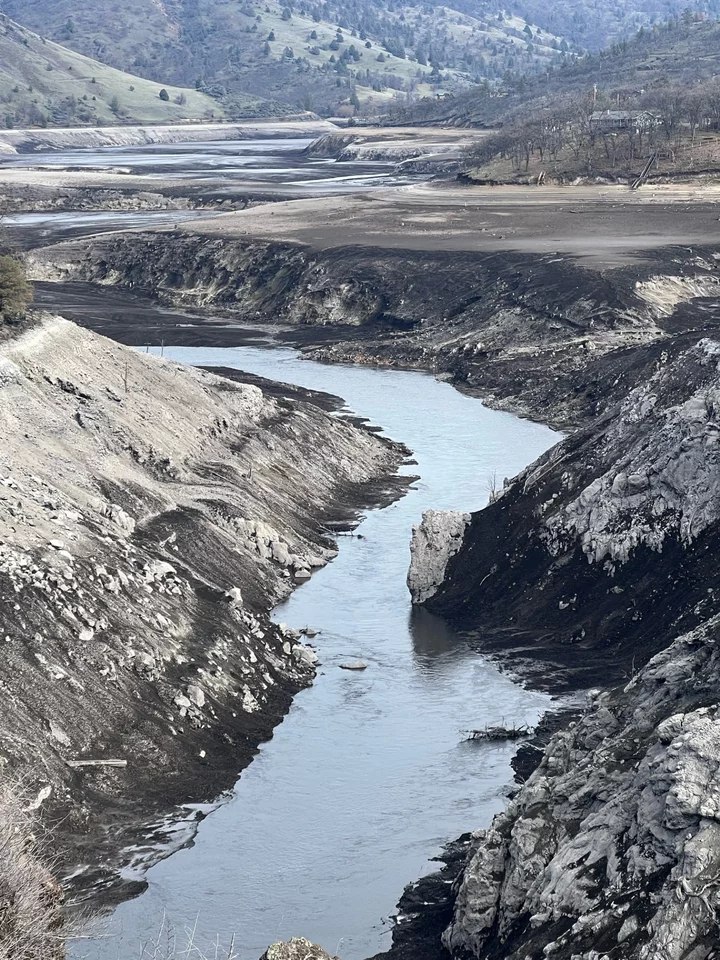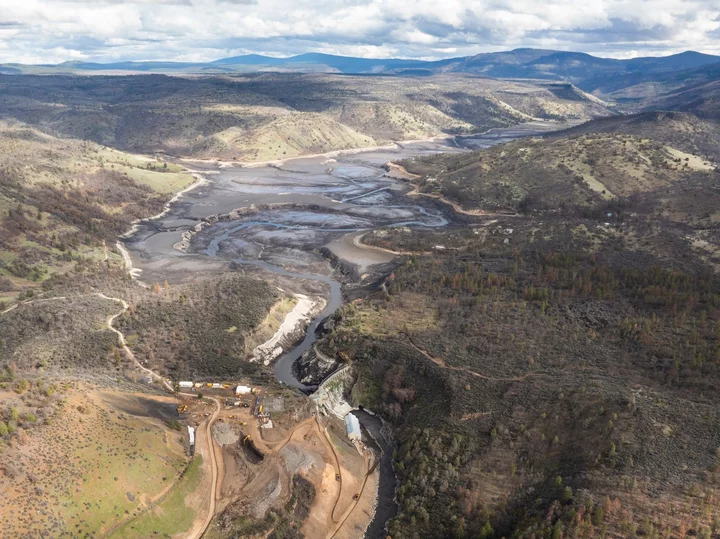MISSING: McKinleyville Man’s Disappearance Marks One Year
LoCO Staff / Tuesday, March 12, 2024 @ 11:29 a.m. / Missing
Humboldt County Sheriff’s Office release:
Last year, on March 22, 2023, the Humboldt County Sheriff’s Office issued a press release notifying the public of Luis Carlos Silva’s disappearance.
This is a just reminder to the public that the Humboldt County Sheriff’s Office still needs the public’s help to locate Luis Carlos Silva, 51 years old, of McKinleyville, Ca. Luis is believed to be missing under unknown circumstances and his last communication with his family was on March 2, 2023.
Luis was reported missing by his family on March 7, 2023. Luis is a Hispanic male, 5 feet 4 inches tall, 175 pounds, with brownish gray hair, a beard and hazel eyes.
Anyone with information for the Sheriff’s Office regarding Luis’ possible whereabouts should call the Humboldt County Sheriff’s Office at (707) 445-7251.
BOOKED
Today: 3 felonies, 11 misdemeanors, 0 infractions
JUDGED
Humboldt County Superior Court Calendar: Today
CHP REPORTS
SR299 W / SR200 W OFR (HM office): Trfc Collision-No Inj
Briceland Thorne X Dewitt Snp (HM office): Trfc Collision-Minor Inj
ELSEWHERE
RHBB: Box Truck Crashed Off SR-299 This Afternoon West of Blue Lake
KRCR: Adult winter-run Chinook salmon seen in McCloud River for first time in almost 100 years
KTLA: Hollywood pays tribute to Ozzy Osbourne
USA Today: Rock star Ozzy Osbourne dies at 76, weeks after final Black Sabbath show
OBITUARY: Patricia Ann Janowski, 1943-2024
LoCO Staff / Tuesday, March 12, 2024 @ 6:56 a.m. / Obits
Patricia Ann Janowski, age 80, passed away February 12, 2024 at her residence in Fortuna.
Patti was born on March 29, 1943 in Oceanside, California to Walter and Charlotte Watkins. Her family moved to Humboldt County to open a restaurant in Arcata when she was very young. They settled in Eureka with her attending Lincoln Elementary School, Eureka Junior High and graduating from Eureka High School.
Patti led a career of public service working over 20 years at the Humboldt County Public Works Department. She later retired from the County of Sonoma Risk Management Department. Shortly after retirement she moved to Fortuna to be closer to her family.
Patti or “Nana” as her grandchildren called her, was fiercely independent, kind-hearted and a devoted mother and grandmother. She could always be found in the bleachers at baseball games or ringside at the dairy show at the county fair. She was an avid reader and gardener, cultivating a perfect lawn, beautiful roses and berries. She loved to share her bountiful harvest of roses, blueberries and raspberries with family and friends. Patti was a true animal lover. She was especially passionate and held a special place in her heart about raising her Siamese cats over her lifetime.
Patti is survived by her son Tom and daughter-in-law Denise, and two grandchildren Emily (Mike) Gerhold and Tyler Janowski. She also leaves behind a lifelong friend Jennifer Simms, her special neighbors and dear friends that were like family to mom, Morgan and Savannah Ferguson and their three daughters.
She is preceded in death by her father Walter Ray Watkins and her mother Charlotte Amanda Huntus, sister Nancy Bender, niece Kim Bender, nephew John Card, sister in law Judi Resch, best friends Jesse and Donna Conn and Elaine Oester.
Arrangements provided by Ayres Family Cremation. In lieu of flowers and services, the family suggests memorial gifts may be made to Miranda’s Rescue, 1603 Sandy Prairie Road Fortuna, CA 95540.
###
The obituary above was submitted on behalf of Patti Janowski’s loved ones. The Lost Coast Outpost runs obituaries of Humboldt County residents at no charge. See guidelines here.
OBITUARY: Barbara Ann Burnside, 1938-2024
LoCO Staff / Tuesday, March 12, 2024 @ 6:56 a.m. / Obits
Barbara Ann Burnside passed away on March 4, 2024 after a short illness surrounded by family at her home in Fortuna. Barbara was born in San Franciso to Harry “Blackie” Freeman and Janice Ingraham Freeman on August 7, 1938. Her father “Blackie” was an accomplished logger in Humboldt County, which gave her the unique experience of living in several logging camps in her early years along with her younger sister Marty Freeman and her brother Harry Freeman Jr. She attended school in Fortuna, where she met her future husband Lars David Burnside in the 8th grade. On June 21, 1955 Barbara married Lars in Stevenson, Washington. They always made Fortuna their home, celebrating their 68th Anniversary together last year. On August 9, 1955 they welcomed their first child, a daughter named Trudi Anne Burnside. Then on June 15, 1961 they welcomed their second child, a son named Lars David Burnside Jr.
Barbara will be fondly remembered for her brilliant and unforgettable smile. Her smile would light up any room as she often would visit and care for elders throughout her life. She had a great passion for collecting hatpins in her travels with her sister Marty. She also loved strawberries in almost anything. One of Barbara’s many talents were making Angel food cake from scratch. She would always buy fresh strawberries and local whipped cream to enhance the cakes! Barbara also enjoyed finding and buying collectibles that she would then resell at her booth at the Fortuna Antique Mall.
Barbara loved to travel with her cousin Cheryl Pirrozoli. They made several memorable trips to Hawaii. On one such trip, for Barbara’s 70th birthday, Cheryl had Trudi (incognito) join them secretly on the same flight to Hawaii, where they spent a never-to-be-forgotten visit on the Big Isle. Barbara also loved feeding the hummingbirds and sparrows in their backyard.
Barbara and Lars shared a deep love for family, friends and community. She especially enjoyed her time spent, being around all of her grandchildren and great grandchildren.
Music also was an important part of their love story from the early years, when Lars played saxophone to their later years where they could be found dancing in the hallway of their home to “Through the Years” by Kenny Rogers.
Barbara is survived by her husband Lars; her sister Marty Carlson and her husband Bill Greenwood, her brother Harry Freeman Jr. and his wife Gail; her daughter Trudi Burnside McKamey and her husband Mark, her son Lars Burnside Jr. and his wife Cindy. She has four grandchildren; Chandler Burnside Sawyer, Lars David Burnside III and his wife Audrianna, Nicole Woodruff and her husband Michael and Kelsie Lipscomb and her husband Boden. She has nine great-grandchildren; Brayden, Kynslie, Keely and Bodie Lipscomb; Larson, Emma, and Liam Burnside; Ridley and Sawyer Woodruff.
Donations in Barbara’s name can be made to Hospice of Humboldt, www.hospiceofhumboldt.org.
Graveside services for family and close friends will be held at Sunrise Cemetery, 3315 Newburg Road, in Fortuna on June 21 at 1 p.m. A Celebration of Life will be held at the Fortuna River Lodge Conference Center in the Steelhead Room, 1800 Riverwalk Drive, Fortuna, directly after the graveside service at 2 p.m., which will also be Barbara and Lars’ 69th wedding anniversary.
###
The obituary above was submitted on behalf of Barbara Burnside’s loved ones. The Lost Coast Outpost runs obituaries of Humboldt County residents at no charge. See guidelines here.
Wiyot Tribe Urges Judge to Toss ‘Citizens for a Better Eureka’ Lawsuit Over Removal of Parking Spaces
Ryan Burns / Monday, March 11, 2024 @ 3:05 p.m. / Courts , Local Government , Tribes
The Eureka parking lot at Fifth and D, which is slated to be developed into multi-family housing by Dishgamu Humboldt Community Land Trust, a unit of the Wiyot Tribe. | Photo by Andrew Goff.
###
In court this morning, an attorney representing the Wiyot Tribe urged the judge to dismiss one of several lawsuits filed against the City of Eureka by special interest group Citizens for a Better Eureka (CBE).
The group, which is financed by the Rob Arkley-founded real estate acquisition and management firm Security National, filed five legal complaints last year aimed at halting multi-family housing projects slated for development on under-used municipal parking lots around the city.
Arguing that the loss of parking would be devastating to downtown businesses, the group claims in its lawsuits that Eureka failed to follow the California Environmental Quality Act (CEQA) when it declared the parking lots “surplus property” and invited interested developers to submit proposals for affordable housing projects.
One of the developers to step forward was Dishgamu Humboldt Community Land Trust, a component unit of the Wiyot Tribe, and last July the city awarded development rights to Dishgamu for two projects — one at the corner of Fifth and D streets, very near Security National’s Eureka headquarters, and the other at Sixth and L, next to City Hall.
Today’s case concerned the now-vacant parcel at Fifth and D.
Conceptual design by Dishgamu Humboldt Community Land Trust, a unit of the Wiyot Tribe, for housing at 5th and D streets. | Image via City of Eureka.
###
The Wiyot Tribe was represented in court by Siena Kalina, Indian Law Fellow with the Davis firm of Berkey Williams, LLC. Arguing via Zoom before Judge John Feeney (who was covering for Judge Timothy Canning), Kalina said the Tribe “has a significant interest” in the outcome of the case, even though it was never named as a party in the lawsuit.
“The Tribe has been working very hard to carry out their obligations under the memorandum of understanding [with the City of Eureka] by developing plans and taking steps to acquire funding for the project,” Kalina said. “But this case is directly threatening the Tribe’s work and presenting considerable uncertainty for the tribe and the success of this project.”
She argued that the Wiyot Tribe is “an indispensable party” to the suit, but as a federally recognized Indian Tribe it also has sovereign immunity and thus cannot be “joined” or included in the suit. Therefore, she said, the suit should be dismissed.
She also argued that the Tribe’s plans for the Fifth and D lot are inextricably linked to the outcome of this lawsuit.
“There’s no way this case can be reconfigured to limit the impact to the Wiyot Tribe because the removal of parking that took place at the April 2023 city council meeting is a necessary first step in the Tribe’s development,” Kalina said.
In a rebuttal, Citizens for a Better Eureka attorney Brad Johnson (also appearing via Zoom) argued that the case technically doesn’t involve the Wiyot Tribe at all. It concerns only the legality of the city’s decision to reduce its parking supply by eliminating several lots, a decision that took place months before the city awarded development rights to Dishgamu.
As for the argument that the Wiyot Tribe is an “indispensable party” to the suit, Johnson disagreed, citing as precedent a 1997 case called People ex rel. Lungren v. Community Redevelopment Agency, which he referred to simply as “Lungren.”
That case concerned a southern California tribe’s plans to build a gaming casino in Riverside County via a development agreement with the City of Palm Springs Redevelopment Agency. The California Attorney General filed a complaint, arguing that the deal conflicted with the state’s anti-gambling laws, and the tribe (the Agua Caliente Band of Cahuilla Indians) filed a motion to dismiss on the grounds of tribal immunity.
In that case, Johnson pointed out, the court ultimately denied the tribe’s motion, explaining that “tribal immunity does not extend to barring suit against a third, non-immune party solely because the effect of a judgment against the third party will be felt by the tribe.”
Johnson reiterated that his client, Citizens for a Better Eureka, has no problem with the Wiyot Tribe’s development plans, per se. (Elsewhere, representatives of the group have said that their lawsuits wouldn’t necessarily prevent any downtown housing projects; they’d simply require developers to build even more parking than what’s currently there.)
Johnson said the case is purely about whether the city violated CEQA when it declared the parking lots surplus property in preparation for future housing developments.
“Here,” he said, “the Wiyot Tribe is not party to the action that was challenged. The agreement with the city that they formed months later is not subject to challenge, and there’s nothing in this case, Your Honor, that would undo the agreement between the city and the Tribe. And as counsel for the Wiyot Tribe noted, there may be some delay [in the housing development], but delay is not adequate to trump all of the legal principles outlined in Lungren.”
Johnson asked the court to deny the Tribe’s motion.
In response, Kalina argued that the Lungren case was different than the one at hand and should not be considered as a governing authority.
“This case does affect the Wiyot Tribe,” she said. “The Wiyot Tribe’s development is dependent on the city’s actions at that April meeting to remove parking. … The Wiyot Tribe has exerted significant time and resources to develop this property and would like to be able to continue this development pursuant to their memorandum of understanding and their awarded development rights.”
She added that if the court rules to require additional environmental analysis under CEQA, the Wiyot Tribe will be forced to bear the cost of additional studies before it can proceed with the housing development.
“Your Honor,” Kalina said, “to say that the Tribe has no interest that is affected by this case, and that it’s analogous to Lungren, is just simply incorrect.”
She asked Judge Feeney to grant the dismissal.
The City of Eureka’s attorney, Autumn Luna, appeared via Zoom for today’s hearing but did not address the court. In response to these lawsuits from Citizens for a Better Eureka, Luna argues that Eureka fully complied with CEQA when it updated the Housing Element for its 2040 General Plan. The parking lots slated for redevelopment were designated for affordable housing in that document, which was certified by the state in 2019.
In February, the state’s Attorney General came to Eureka’s defense, urging the court to reject the various legal motions from Citizens for a Better Eureka.
At the outset of today’s hearing, Feeney said he needs more time to read and consider the documents submitted in the case. After today’s arguments he said he’ll take the matter under submission and issue a written ruling before the end of this week.
###
PREVIOUSLY:
- The Eureka City Council Wants Developers to Build Affordable Housing on Three City-Owned Parking Lots
- Eureka Planning Commission Chair Jeff Ragan Abruptly Resigns, Citing ‘Grave Concerns’ Over City’s Approval of Housing Projects on Three City-Owned Parking Lots
- The City of Eureka is Gearing Up to Turn Three More Parking Lots into Affordable Housing Developments, Including the Two Lots at City Hall
- Arkley Threatens Lawsuits, Referendum, Recall Drive Over City of Eureka’s Plans to Convert Parking Lots to Housing
- Eureka City Council Postpones Vote on Proposed Parking Lot Land Swap
- ‘Furious’ Rob Arkley Says He’s Moving Security National HQ Out of Eureka After Clashing With City Staff About Development Priorities
- New Group — ‘Citizens for a Better Eureka’ — Says It Will Sue Eureka Over Downtown Housing Development
- Here is the Housing Development/Parking Lot Lawsuit Served on the City of Eureka Today
- Arkley-Affiliated Group ‘Citizens for a Better Eureka’ Files Second Lawsuit Against the City Over Development Plans
- Local Group Announces Intent to Stop the City of Eureka’s Conversion of Downtown Parking Lots Into Housing With New Ballot Measure
- Wiyot Tribe Makes Its Case, Convinces Eureka Council to Reject Staff Pick and Award Affordable Housing Development Projects to Tribal Land Trust Agency
- Group Circulating Eureka Housing Petition Says the Wiyot Tribe’s Projects Are OK, Clarifies That Parking Lot Conversions Will Be Allowed So Long as Developers Build Even More Parking Than Before
- Eureka Gets $30 Million Grant for Housing Projects That the ‘Housing For All’ Initiative Hopes to Block
- New Coalition — ‘I Like Eureka Housing!’ — Formed to Oppose Arkley-Backed Pro-Parking Lot Initiative
- (UPDATE) Arkley-Affiliated ‘Citizens for a Better Eureka’ Files Two More Lawsuits Against the City, Aiming to Block Linc Housing Developments
- State Attorney General’s Office Joins the Fight Against the Pro-Parking Group ‘Citizens for a Better Eureka’
‘Simply Catastrophic’: California Salmon Season to Be Restricted or Shut Down — Again
Rachel Becker / Monday, March 11, 2024 @ 1:34 p.m. / Sacramento
Chinook Salmon swimming along the Scott River on Oct. 30, 2023. Photo by Larry Valenzuela, CalMatters/CatchLight Local
California’s fishing industry is bracing for another bad year as federal managers today announced plans to heavily restrict or prohibit salmon fishing this year, following a complete ban last year.
The Pacific Fishery Management Council today released a series of options that are under consideration, all of which either ban commercial and recreational salmon fishing in the ocean off California or shorten the season and set strict catch limits. The council’s final decision is expected next month; the commercial season typically begins in May and ends in October.
While more Chinook salmon returned from the ocean to spawn last year than in 2022, fishery managers said the population is expected to be so small that they must be protected to avoid overfishing.
Fall-run Chinook salmon are a mainstay of commercial and recreational fishing and tribal food supplies. But their populations are now a fraction of what they once were — dams have blocked vital habitat, while droughts and water diversions have driven down flows and increased temperatures, killing large numbers of salmon eggs and young fish.
The plan is a devastating blow for an industry still reeling from last year’s closure. State officials estimate that last year’s closure cost about $45 million — which the fishing industry says vastly underestimates the true toll.
“There’s no way to sugarcoat it, as it’s simply catastrophic,” said Scott Artis, executive director of the Golden State Salmon Association, which represents the commercial and recreational fishing industry, other businesses, restaurants and environmentalists.
“The fishing industry and many thousands of salmon families and businesses eagerly waiting to get back to work are potentially facing another year in the harbor instead of putting food on the table.”
The options are likely to evolve as the Pacific Fishery Management Council continues to analyze them over the next month. Two call for significantly shortened seasons and harvest limits for both commercial and sport fishing off California this year. The third would cancel the season for the second year in a row.
“In response to poor river and ocean conditions, California stocks are forecast to have 2024 abundance levels that are well below average,” Marci Yaremko, the California Department of Fish and Wildlife’s appointee to the Pacific council, said today. “The options that have been developed that do authorize some fishing are very precautionary.”
Harvest limits and other restrictions on the number of fish caught per trip are new concepts for managing ocean salmon fisheries, Yaremko said.

Jared Davis stands aboard his boat, the Salty Lady, in Richmond on March 8, 2023. Photo by Martin do Nascimento, CalMatters
“Even the best option that they give us there is crumbs compared to a regular salmon season,” said Jared Davis, captain of the Salty Lady, a charter fishing boat.
Still, of all the options, he said, he’d prefer complete closure. The shortened seasons don’t offer enough days to sustain his business and the potential repercussions aren’t worth it.
“I think fishing on low abundance such as we have this year is reckless and irresponsible,” he said. “It’s really playing with fire for us to take any fish out of there.”
Sarah Bates, who owns a commercial fishing boat berthed at Fisherman’s Wharf in San Francisco, called the decision “tragic.”
“We’re looking at numbers of fish that don’t even make it worthwhile to untie the boat,” she said. “It’s not enough fish to pay for the maintenance and preparation.”
A financial nightmare — some may never fish again
RJ Waldron, 48, put his sportsfishing boat, the Sundance, up for sale in January. When the salmon season closed last year, an estimated 85% of his business dried up. Few clients took him up on his offer to switch to halibut, striped bass or rockfish.
Buying the boat eight years ago to run a charter fishing business out of the East Bay had been a dream come true for Waldron, a long-time fishing and hunting guide.
“Basically this last year, I’ve just been blowing through my cash, blowing through the savings, just trying to stay afloat,” Waldron said. “I put everything I had into this fishing business, into the salmon. And it’s totally out of my control. I can’t resurrect it.”
“We’re looking at numbers of fish that don’t even make it worthwhile to untie the boat. It’s not enough fish to pay for the maintenance and preparation.”
— Sarah Bates, commercial fisherwoman in San Francisco
California’s commercial fleet and recreational anglers still await federal disaster aid for last year’s losses. The federal government allocated only $20.6 million in disaster funding, and a year later, none of the salmon fishers CalMatters interviewed has received a check.
Waldron called the lack of disaster aid a “big slap in the face.”
Davis said he tried to weather the storm by arranging trips for halibut, striped bass, rockfish and lingcod. Still, he estimates that his business was down 80% from a normal year.
Seeing the season restricted this year, “breaks my heart,” he said. “It’s what I love, and it’s a passion. It’s something I’ve been doing my whole life, and I know that there’s a lot of others in the industry that it’s the same for.”

Fishing boats at a dry dock in Richmond on March 8, 2023. Photo by Martin do Nascimento, CalMatters
Salmon fishers fear the closure will drive yet more boats permanently from the fleet — already down to 464 vessels in 2022 from nearly 5,000 in the early ‘80s. Recreational salmon fishing trips plummeted from nearly 99,000 in 2022 to zero.
Bates estimates that about half the fleet picked up shore jobs. And some, she said, probably won’t return.
“Some people, I’m sure, will not go fishing again,” she said. “They got a job that will hold them through and their momentum will shift, and I’m sure we’re going to lose members of our fleet.”
To make ends meet last year, Bates picked up bookkeeping work. But she doesn’t know yet what she’ll do this year. Bates’ boat is called the Bounty, a cruel irony the past year. Still, she said the boat has seen bad seasons before — and it’s bad luck to change a boat’s name, she said.
Tommy “TF” Graham also will keep working on land. A commercial fisherman based in Bodega Bay, he got a Class A driver’s license so he could drive a truck and stay afloat through the closures. Now, when he’s not crab fishing, Graham wakes up at 3 a.m. to drive frozen and farmed salmon and other fish from around the world into San Francisco.
“A guy has got to get up and put his boots on and go to work every day,” Graham said. Still, he said, “I used to be a provider, now I’m a consumer. It feels like shit, to tell you the truth.”
Tribes with subsistence fishing do not have to follow the federal recommendations, although they often cancel or heavily restrict their own seasons.
‘Disastrous’ salmon numbers
Today’s decision follows the release of population numbers that industry experts called disastrous.
Sacramento River fall-run Chinook make up the greatest proportion of the California and Oregon ocean salmon fisheries. Their numbers are down from an average of more than 200,000 fish that returned to spawn in the mid-2000s. And those numbers are a fraction of the historical counts of between one and two million fall and spring-run salmon returning to the Central Valley every year.

Last year, fewer than 134,000 returned to the Sacramento River. That’s more than double the fish that returned in 2022, which was the third lowest count on record. But it barely cleared the federal government’s minimum conservation target of 122,000 fish, and falls 19% short of the number that had been projected to return — despite the cancellation of all salmon fishing.
Now, scientists estimate that 213,606 Sacramento River fall-run salmon are swimming off the coast. It’s more than last year — more even than the upper limit of the fishery’s conservation target. But it is still the second lowest projection in a decade, according to a guidance letter from the National Marine Fisheries Service. “Caution is warranted to reduce the chances that the stock becomes overfished again.”
Federal officials attributed the struggling populations in part to low flows and high temperatures on the Sacramento River during California’s drought in 2021, when the fish returning this year were spawned.
But the salmon industry also points to state and federal management of the Sacramento River and operations of the vast Central Valley Project, which funnels water south from Northern California’s rivers to irrigate a third of the state’s agricultural land and supply a million households.
In 2021, almost all of the endangered winter-run Chinook eggs in the Sacramento River were wiped out, cooked in dangerously hot water. The Pacific Fishery Management Council told state and federal water managers in 2022 that the conditions also could harm eggs of spring-run and fall-run Chinook salmon. Expressing their “grave concerns,” they said “a major factor” was the “high river temperatures that were under (the U.S. Bureau of) Reclamation’s control.”
The Newsom administration has come under fire from conservationists and the fishing industry for actions that could jeopardize salmon, including waiving water quality requirements in the Delta and backing a controversial pact with major water suppliers related to diversions from the Bay-Delta watershed.
“It’s really hard for me to swallow that we export all this water and have little to no regulation on the farming,” Waldron said. “We’re taking away from a resource to give to another resource. And I don’t understand how we can let that happen, especially (since) the salmon are a natural resource.”
The Newsom administration unveiled a plan in January aimed at protecting and restoring salmon “amidst hotter and drier weather exacerbated by climate change.”
###
CalMatters.org is a nonprofit, nonpartisan media venture explaining California policies and politics.
CHAMPS! St. Bernard’s Academy Girls’ Basketball Team Dominates in Sacramento to Claim State Crown
LoCO Staff / Monday, March 11, 2024 @ noon / LoCO Sports!
Holy wow! Three or more cheers are in order for St. Bernard’s girls basketball team who made history over the weekend by becoming the first team in H-DNL history to earn a state championship.
Taking the court at the Sacramento Kings’ Golden 1 Center on Saturday morning, the team scored a dominant 47-29 win over Grossmont High School out of San Diego.
Take that, SoCal! Read more at the Humboldt Sports.
(PHOTOS) Deconstruction Underway on Copco No. 1, the Second of Four Dams Slated for Removal on Klamath River
LoCO Staff / Monday, March 11, 2024 @ 10:03 a.m. / Environment , Infrastructure
Copco No. 1 goes boom. | Image by Swiftwater Films, courtesy KRRC.
###
Press release from the Klamath River Renewal Corporation:
Hornbrook, CA – Following Friday’s successful test blast, the Klamath River Renewal Corporation will proceed with the removal of the Copco No. 1 Dam, the second dam to be removed as a part of the Klamath dam removal project.
The Copco No. 1 Dam, constructed in 1918 for the sole purpose of hydroelectric power generation, has blocked fish passage for over 100 years and is expected to be fully removed by the end of August 2024.
“We are excited to get to work,” said Mark Bransom, CEO of the Renewal Corporation “with the initial phase of drawdown complete, the dam is fully exposed and can safely be disassembled.”
Copco No. 2, a diversion dam that was located just downstream of Copco No. 1, was removed last year. The remaining three dams, Copco No. 1, Iron Gate, and JC Boyle, created reservoirs that needed to be drawn down before removal could begin. The initial phase of drawdown concluded last month, and shortly thereafter FERC approved an advancement in the schedule, allowing for the removal of Copco No. 1 ahead of the other remaining dams.
Iron Gate and JC Boyle, which are clay core earthen dams, will remain at their full height until the spring runoff period has concluded and the Klamath River has returned to baseline flows. Work on their deconstruction will likely begin sometime in May, depending on precipitation.
Deconstruction of the Copco No.1 Dam, which will be performed through a repetitive cycle of drilling, blasting, and chipping, can begin before the spring runoff period has concluded because it is a concrete arch dam. So, should the Klamath River experience a significant flow event this spring, water could safely pass over the partially removed concrete dam and the dam would remain securely in place. The Copco No. 1 Dam removal plan was specifically designed to allow for this safe flow passing, should it occur.
The removal of Copco No. 1, Iron Gate, and JC Boyle Dams is expected to be complete sometime this fall, in time for the Fall run of Chinook salmon. The restoration of the former reservoir footprints is currently underway and will continue for several years until vegetation is successfully established and water clarity has returned to baseline conditions.
Photo by Shane Anderson.
The drawn-down reservoir behind Copco No. 1. Restoration is currently underway. | Photo: Swiftwater Films.
Backside of the Copco No. 1 dam after drawdown. | Photo: Swiftwater Films
Drawn-down reservoir looking upstream from Copco No. 1. | Photo: Swiftwater Films.
Photo: Swiftwater Films.



